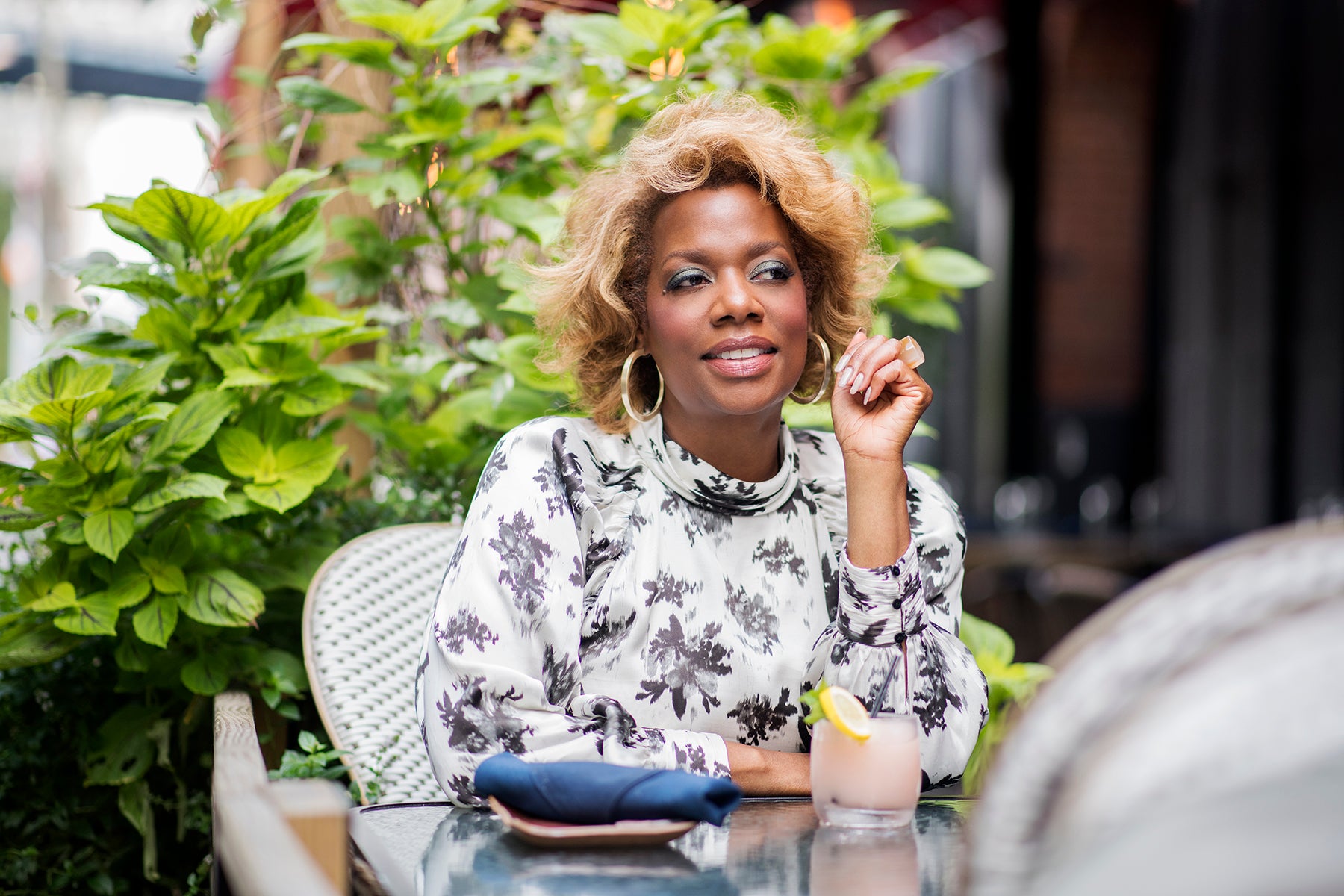The 50 States Project is a yearlong series of candid conversations with interior designers we admire, state by state. Today, we’re chatting with Erin Shakoor, who founded Chicago-based Shakoor Interiors nearly two decades ago. In addition to sharing favorite moments from recent projects, she talks about why having a tribe is key to success in this industry, why her clients trust her to take big risks with color, and why this isn’t the time for business owners to retreat—even during a pandemic.
You were an artist before you were an interior designer. When did this become a career path, and how did you pursue it?
When I was very young, I was fascinated with space and pattern, and really drawn to fashion. When I was 12 or 13, I became obsessed with Vogue and their September issue. I didn’t know at that age that the magazine was a big deal, but I would see it in the grocery store, it was really big, and it was my birthday month, so I was like, “Yes, this is all about me.” I became fascinated with fabric, textures, textiles—not knowing they were called textiles yet—and color, pattern and shape. I wanted to go into fashion, so I was always drawing and sketching. I would ask for gifts that were related to fashion—like Fashion Plates. Remember those?
Oh, totally.
At that age, it was clear to both my parents that I was a creative and would be in the arts. Fast-forward a few years, it’s time to start thinking about college, and at that point, I had been in every art class in high school and outside of school—color theory, illustration, life drawing, stuff like that. I knew I wanted to go to art school. I applied to RISD and didn’t get in; I was crushed. I also applied to the Kansas City Art Institute and I got in. At the time KCAI was a top-rated art and design school in the country, so I went there. I was taking a class in a building attached to the fiber arts building and I fell in love—this desire to have my hands on fabrics was revived. From that point on, I was practicing textile design, printmaking, papermaking and sculptural work.
I moved back to Chicago after I graduated and got a job in what I would almost call a sweatshop. It was a warehouse space that was so rough and tough, with rodents in it. We were designing and printing, hand-painting silk for men’s neckwear, pocket squares, and some ladies’ silk scarves for retail shops. We were paid pennies for original designs, all of our labor, and then they would sell them for hundreds of dollars in retailers all around the country. The Bulls team members were wearing all of our ties—you’d see them sitting courtside with our ties on. So I did that for a while, while still trying to figure out how I was going to earn a living as an artist—as a textiles and surfaces designer.
How did you move on from there?
Eventually, I set up a studio in my second bedroom, got a job as a teacher and was working for arts organizations all around the city teaching basic eight-week courses in printmaking on textiles. These kids, sixth graders all the way up to high school, had never experienced anything like that. They didn’t even know what the word textile meant—it was fascinating to explore and expose them to what art is, what a textile is, and how different textiles are made around the world. Meanwhile, I’m printing in this second bedroom for these tiny little commissions for people who wanted wall hangings, pillows and soft accessories.
While I was doing that, I would go to their home and figure out where these pieces would hang and what size the piece should be, and we would start having organic conversations about spatial layout, which happened to be an intuitive skill for me. When I would walk into a space, I would say, “Oh, something’s off here. This should be here. This is too small. Make this larger. Make this smaller.” Three times in a row, [clients] were like, “Oh, you could have charged $500 for that.” I was like, “Wait, what?” I was broke.
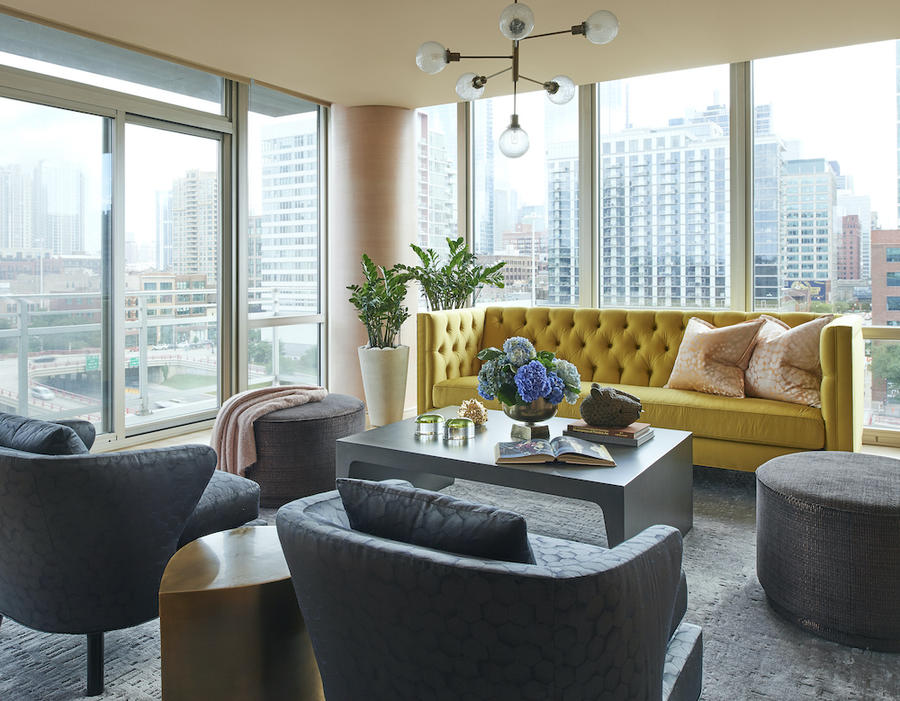
You were an interior designer and you didn’t even realize it!
Yes, that’s how the interior decor business started for me. I started doing what I’ll call cosmetic refreshes. I had absolutely no relationships in the industry. I was buying things from retailers, the few that existed at the time. I would walk into the design center very fearful, not knowing what to ask. But man, I would get consumed—in a good way—by all the textiles. My first account was a Kravet account, and I felt real grown-up. I was like, “I’m on my way now.” From there, I started taking a lot of business of design courses to develop design skills until I was ready and confident enough to expand my business.
When did the interiors business become the full-time thing?
I let the teaching go and got a retail job at Neiman Marcus—a friend who had been working there suggested it. He said, “You should come into this environment, because we’re dealing with a high-end clientele and it’s going to be a great experience for you.” I didn’t necessarily get why he was saying that, but he saw something I didn’t see. I just wanted health insurance!
I worked in the home decor department, where I got a real hands-on, real-time, real-life experience selling Buccellati silver to people who were buying it from a wedding registry. Like $50,000 worth of silver. I was like, “Wait, you can have that at one table? What?” I learned a ton about crystal and silver and china and textiles and hand-painted wares, and it was a really good experience.
So you were working there full-time and taking on design work. What were those early clients like?
Oh, family and friends—and I would never propose anything major. I remember having some fear, thinking, I hope they won’t ask me to knock down that wall. I don’t know how to do that yet. So I would do more decorative work. It was on a grander scale than before, but they were very modest budgets. Even though I’d been working at Neiman Marcus, it didn’t translate when it came time to talk about what was needed—I totally ran away from the budget concept. I was like, “Oh, that’s what you wanna pay? OK, we can do that.” And the same thing with the builders and the contractors: Whatever their pricing was, I would say, “OK, that’s what it costs.” This is back in the early 2000s.
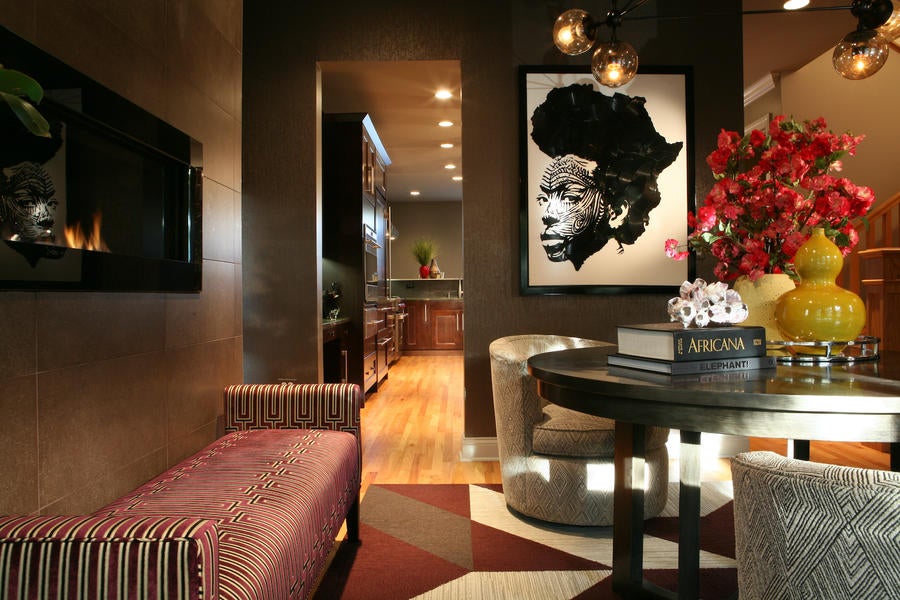
When was the moment when you came into your own and felt really confident?
This is gonna sound crazy, because it’s very recent—it was in 2016. I had just completed two of the largest projects I had ever done—they were whole house renovations. We worked on them for several years, and once they were done, I was like, “Alright. I have the capacity, the ability and the relationships to do this and make my clients very happy.” Prior to 2015, I was always kind of shrinking myself. I would take on small projects: one room, two rooms, three rooms. I was always thinking, Oh, we can’t do a whole house. It was ridiculous, but that’s what I was thinking.
How did you decide to take those first two whole homes?
A client that I went to have a consultation with, we liked each other and said, “Yes, we want to do this work.” Then she delayed [the project], but referred me to someone else who was interviewing multiple designers. When I heard that, I thought, “Well, I’m not going to be the one they pick.” But they did pick me, so I had to build the plane while I was flying it. I was just like, “You want me to do all of this, tip to tail, front to back?” And they were like, “Yup.” I said yes without knowing how it would all come together. I was kind of blown away by the fact that someone who I’d had one meeting with made a referral even though we hadn’t worked together. That external feedback really helped me build my confidence and be able say, I really do know how to do this.
What types of projects and clients do you have today?
About three years into my business I had a project in a historic home in a historic neighborhood. This project turned into several more with referrals, and I realized I was falling in love with old, crusty homes. The crustier the better. So I decided to enhance my knowledge and get a professional certification in Historic Preservation around 2010. It was worth the time and money.
My clients tend to be really well-established in their careers, in their 40s, 50s and above. They’re still working and are usually executives who are superbusy, and have the luxury of hiring an expert to take care of their needs—cleaning, cooking, entertaining, designing. They are also clients that are new to interior designers. I find that for almost all of my clients, I’m their first designer, so I end up explaining to them that you can’t work with us and not be involved in the process. I talk about that very early on in our interview process. I run through some of the activities and exercises we're going to engage them in, so that we understand all of their hopes and dreams.
I love that you used the word exercises. Can you tell me a little bit about that intake process?
One of the first things we do to get the juices flowing is a proprietary color conversation. In our first planning meeting, I bring a bunch of samples of color, and they come in different mediums: some are fabric, some are paint swatches, others are random things or objects. I dump them on the table, ask the clients to dive into this pile and pull out the things that really appeal to them, and to not be concerned about why or where this color might live in their house but just grab what they want. We document, we take a picture.
From there, I overlay these piles of information, [looking for] where there’s symmetry and synergy, and where there are things that are completely opposing—which is really when I get excited. I give them a color plan, a design plan that incorporates what they want, and I also incorporate these otherwise-opposing ideas, and make it work. That just blows their mind, and they’re like, “I can’t believe you took that pile and turned it into this.” That’s very exciting for all of us, and that’s how we get going. We move in a direction rooted in color. I get to decide where that color is applied, because sometimes they try to say, “Well I don’t want this over here.” And I say, “Hold on, it might work in a certain way. Let me show you what’s possible, and then we can move stuff around. We’re not buying it yet.”

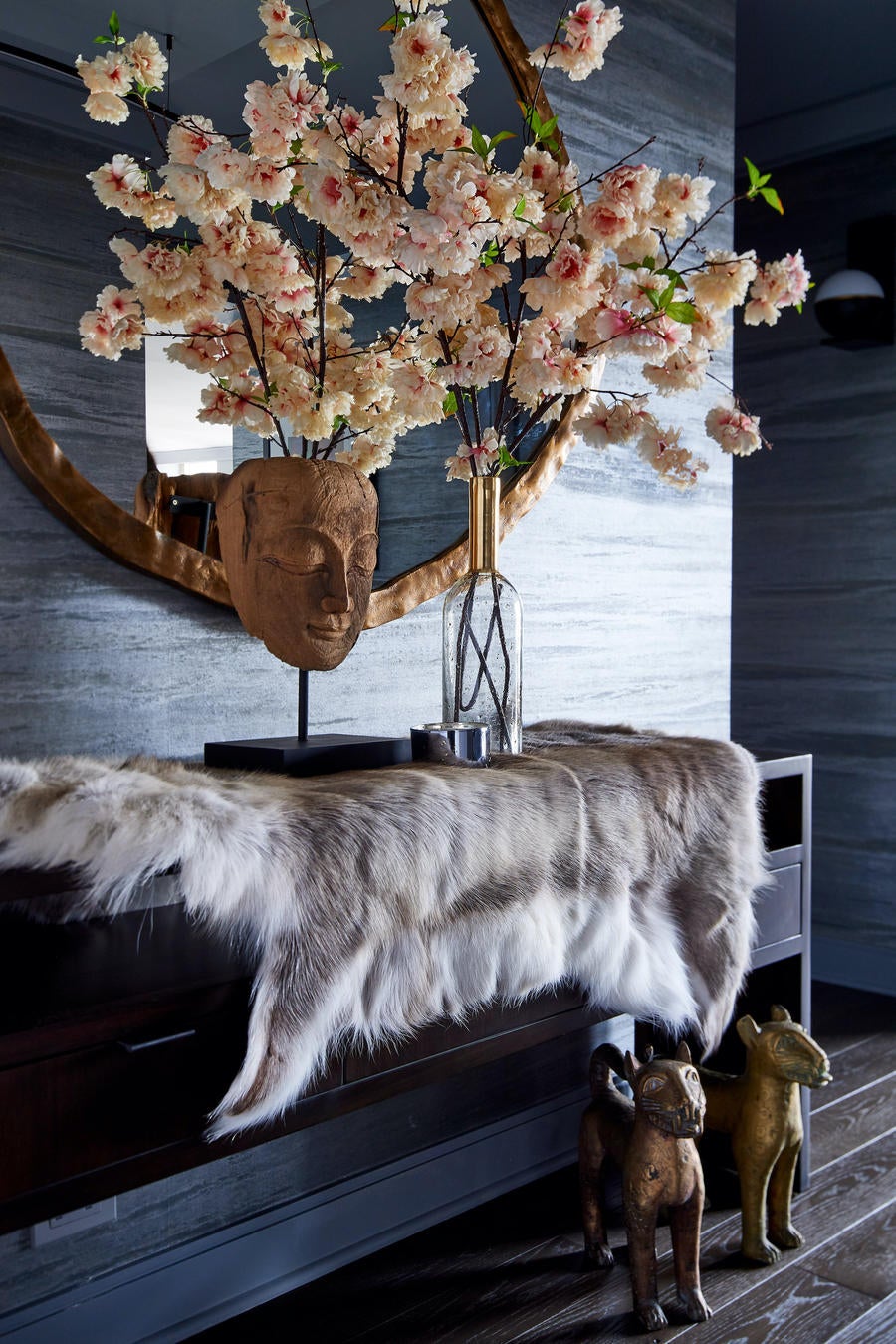
How do you do those presentations and help people visualize what you see?
I do not present hyperreal imagery to clients, ever. I used to do that in the beginning because I’m an illustrator and an artist—so I would draw and paint these images. I remember one time I showed a client something and he was like, “Whoa, that’s so beautiful, I want to frame it.” His son was standing there looking at it, and we’re standing in the room, which at the time looked like crap—this big, weird green room. The 8-year-old-son pointed to it and said, “You’re gonna do this, in here?” And I said, “Yeah.”
That’s so cute.
By the way, I always have the children in our initial meeting. They love it—they love the process, love when the workmen are there. But anyway, I don’t do the hyperreal drawings anymore, or renderings. Whenever I see other designers [doing it], I get a little envious, like, Oh, that’s so gorgeous. But I don’t do it, because it ruins the excitement—the reveal, the anticipation of how we’ve interpreted everything. I also feel like it gets in the way of a human being holding their vision. I feel like it should be internal until it is in the room, not on a piece of paper.
What does the presentation look like instead?
There’s a physical presentation of the pieces and parts: the tile, stone, cabinet color, the textiles and all of that, combined with product images. I bring the products and samples to the house and create a mood board on a counter or table. I preassemble it in the office, take a picture, then re-create that in their homes. We [also] create a digital presentation of these pieces and parts. But those are not nearly as exciting to me as the physical board that we create in their home.
How do they respond to that?
They’re very excited. They love that they can touch it, pick it up, move it around. They come for color, because we’re handling it in a way that is not rote or expected. We’re combining unique palettes and applying dynamic color to places that people have normally been scared to apply it. They love the physical aspect of this vision being portrayed and sketched out in real time.
From there, are people ready to say yes and sign off on purchasing?
We start to talk about rooms as a whole—what it might cost if we inserted this mohair sofa or those silk draperies. We talk about numbers and budget from a high level. From there, I develop a budget based on the look of that particular board. I’ve done it that way for years, which I’ve learned recently is problematic. The client really needs and deserves to have a budget on the front end versus me designing it and then saying,“That’s what it costs.”
I know many other designers struggle with this, because I’m part of a peer group. We talk about this all the time. [Alternatively,] you’re getting into budget on day one. I was like, How does that happen? Well, I’ve only recently learned how to do this, and we implemented that as of the end of last year.
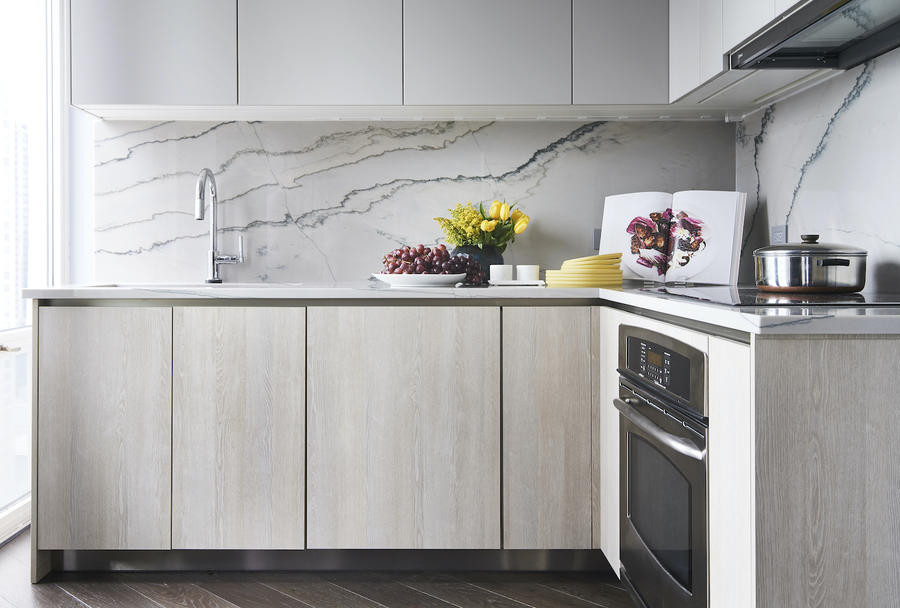
What does that conversation look like now?
When we show up for a consultation—which is now a paid consultation—we start to talk specifically about pieces of furniture, what they normally cost, and ask them to engage in questions like, “What would you like to pay for that? What are you comfortable paying for a table or for a sofa?”
In the process, we make sure we don’t frown or make any faces. Just write it down. At the end we say, “All right, this is a $25,000 room, and here are my suggestions for where you might upgrade to bring it up to a certain aesthetic based on the images we’ve looked at.” Because at that same consultation, we’ve been looking at images, and I have to now bridge a gap between the number that I’ve come up with, based on what they’re saying they’re willing to pay, and the images that we’re showing each other. It helps the client say, “Oh, I see why this would not cost $25, it actually costs $50. Let me think about that.” Or, “This costs $50,000 and I’m okay with that.”
How often does that happen?
Where they say one number, but they go up? Every day. Are you kidding?
Is it that they don’t know, or are they trying to see if they can get away with a lower number?
It’s a combination of both. I also think there’s a third element: People are not aware, until they’re challenged, of how much they’re willing to stretch.
I’m the same way. I’m like, I didn’t know I was willing to go on this extravagant vacation. They did not know until you gave them the challenge that they would be willing to stretch for themselves. [The design is] not for anybody else but themselves.
Speaking of resources, where do you shop?
We buy about 30 percent of our products from trade-only showrooms and sources, from theMart and other artisans who are one-shop type places, and then 70 percent are pieces that I design and we have them crafted locally. I love designing furniture, I love designing anything—if I can make it up on my own, I’m a very happy girl.
That’s incredible. How did you find the vendors who make the pieces for you?
Recommendations through other designers. I have been a part of Interior Design Peer Alliance for about 10 years, since its inception. The group is 10 to 12 designers that came together to mentor young designers, travel to design events and conferences, be cheered on and cheer others, and occasionally talk each other off the ledge. This group has been a major source of support for me. We share the good, bad and ugly of our business and lives sometimes. Having a “tribe” is key to success in this business. One of our main purposes of coming together is to share best practices, sources and resources, and to support one another when things are going sideways.
The other way that I find sources is by going to trade shows. I’m a huge fan of ICFF, so I've been going for several years. I also go to Maison&Objet. I love finding sources that are not in the U.S.
What does your team look like?
It’s three people—me, a virtual assistant office manager, and my draftsperson, who does all of our CAD illustration. I’m developing the business, designing, and having all the physical interaction with clients, contractors, dealing with specifications and things like that—and ordering.
That’s a lot.
It’s a lot. Many of my colleagues do it that way too. Its like, Well, this is the way it gets done when we’re in a small shop. But recently, I have been like, No. I’ve got a list of all the tasks that I as the interior designer am responsible for, and am [starting to delegate and outsource more of those tasks].
And how many projects do you have going at one time typically?
Typically, it’s about four.
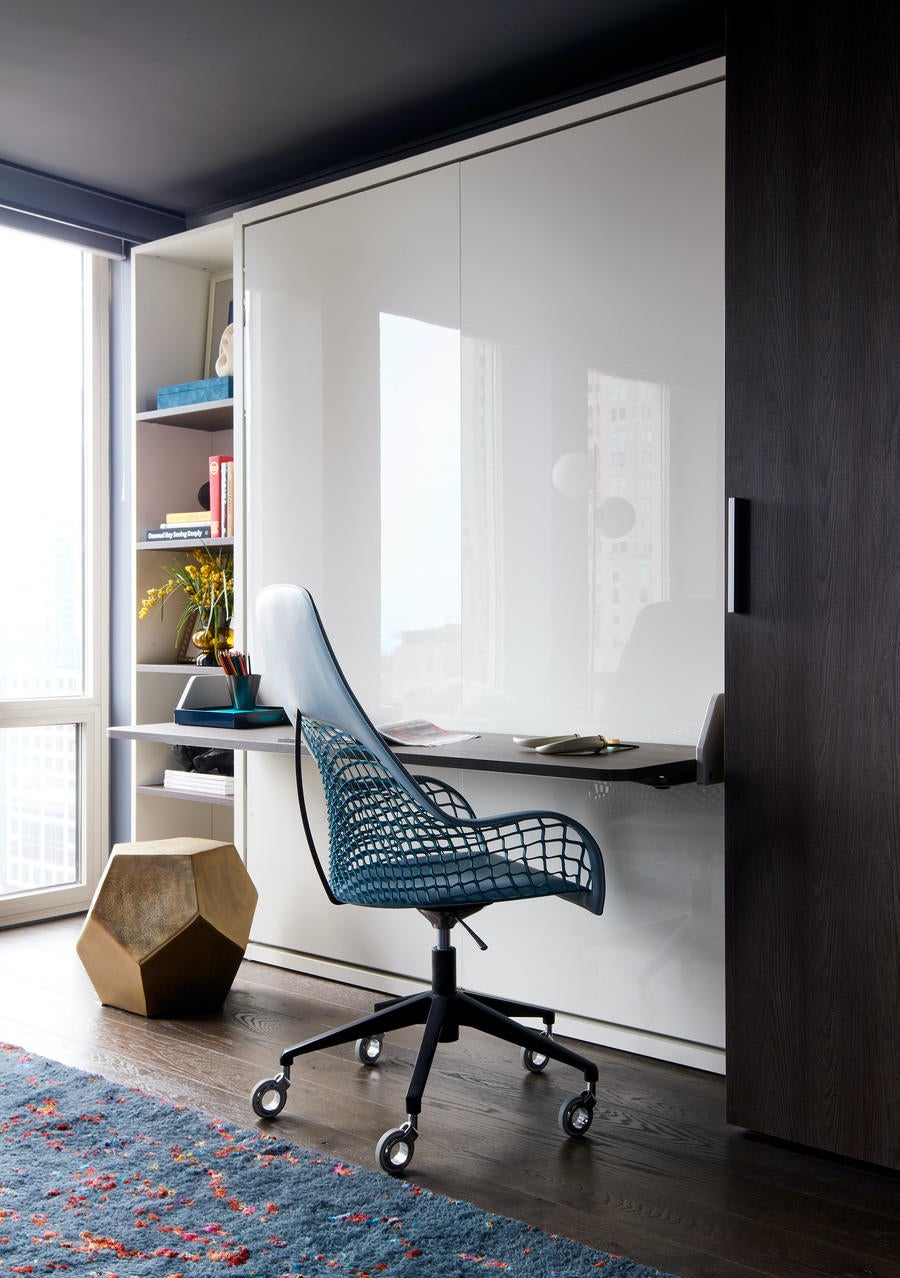
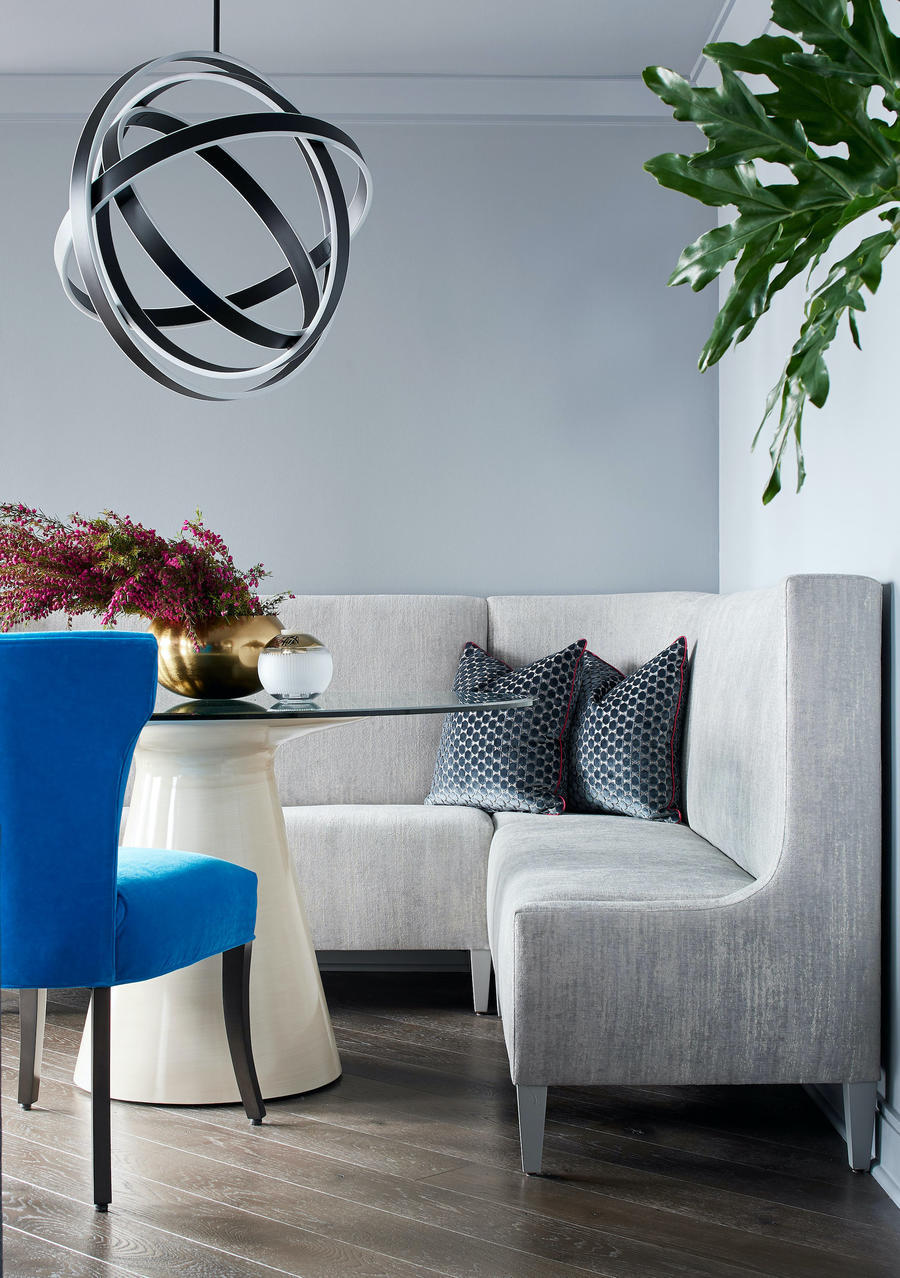
On your website, you break out three different kinds of services: the full service, ‘design like me,’ and on-the-spot consultation. How did you develop those categories?
I’m a lifelong learner. I’m constantly taking workshops, especially to do with being a better business owner. ’Cause that’s just not my thing. And I run away from it sometimes. I took a class in 2018 where I learned that I needed to not do any more free meetings. This coach was like, “How many of those did you do in the last like eight months?” There were eight of them. She was like, “Wow. You just left like $5,000 on the table.” That was really eye-opening.
I immediately came up with a price point for this two-hour interaction: what [clients] would get, what we would do. And it was what I“ve been doing all along, just [finally] starting to charge for it. The result has been awesome. People, when they know they have to pay for me to come out, they immediately say yes or no. They don“t futz around. While we“re in this initial consultation, I’m becoming better at figuring out the budget and getting them to say it so I can decide [whether] this is a good fit or not.
Most clients go from that initial consultation to [hiring me for the full service] and skip over that middle entry point—the “design like me” option. And I’m good with that, because that’s not my lane. I’m not trying to really teach you how to design like me, but if you wanna spend a whole day running around town getting exhausted and hungry, hey, come on. Let’s do it.
How many people are doing the ‘design like me’ option?
Since I started offering that less than a year ago, I’ve had two. And you know what? They went really well, and the clients were happy with it, but the part I don’t like about that—because I’m a service person—I hate to see people having to order things on their own. Although they’ve got all the information, I walk away going, God help us. Please don’t order the wrong thing.
Is it a lead generator? Do you think they’ll turn into full-service clients down the road?
No. It’s a totally different client. Because I cannot produce a full-service product offering for a “design like me” retail service. It’s not possible. And I don’t want to. I want to treat the people who want the VIP service like a VIP.
How do you charge?
That was a struggle. I was always hourly, but when it comes time to bill, you see the hours at the end of the month, you start scaling back, because you don’t want to send a bill like that. It’s really different between men and women when it comes to money, you know? I know male designers are like, “Screw that, send the bill.” Anyway, that was going on for years, and it created a lot of anxiety, the type that would keep me up at night [worrying that] this is not profitable enough. Starting two years ago, my new technique is to develop a budget on the front end, add a percentage to the decor and furniture budget and a percentage to the construction budget.
What I’ve learned is that if you have a $300,000 furnishings budget and you add 15 or 20 percent to that, from the client’s perspective, they’re like, “Oh, we’re spending $300,000 on furniture for six rooms and her fee is 15 or 20 percent of that.” It feels balanced to them. This is what I’ve learned and been taught over the last few months, and it has turned out to be true.
Are you basing that percentage on the product’s trade price, or on a cost with markup?
They are not ever getting our full discount. That percentage is on the total cost of goods. That bottom number on the budget covers everything—us taking care of it, making it happen. Then the product commissions allow us to be profitable at the end of the day. That was a huge learning curve for me. It’s like, Oh, are we double-charging them, and how do we make this right and balanced? But that $300,000 number includes our commission. So no, everything has a markup. Nobody is ever paying retail—they’re always paying a little bit less than whatever the MSRP would be—but they’re never getting our full discount.
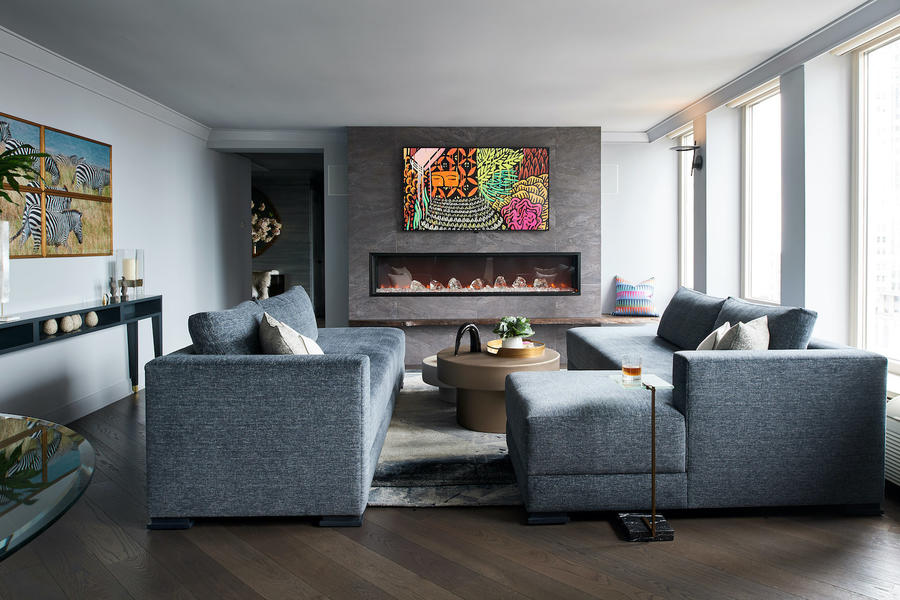
Where do you see the most opportunity to grow?
Customer service, and having a VIP experience for our clients from tip to tail. I want that for them so badly. I want them to feel like we are here for their every need. I want them to feel like, if you have a Benz or a BMW, and you take the car in for a service, they give you a loaner car in the meantime. You’re having your car customized and they’re sending you updates on what the fender or whatever looks like now.
I also want to bring more designers of color into the industry. There are not enough of us. Maybe they’re there, but like me, we’ve been in the background for a long time. There are young black designers out there who are just like, “There’s nobody for us to talk to, nobody will.” And actually, people will talk, they just think that they won’t. In early 2019, I joined the Black Artists + Designers Guild, and as a result I have had numerous opportunities to be included in a variety of publications. Along with four other member firms, my firm is collaborating with a textile house to redesign an existing line that is planned for launch in August. Developing a line of textiles has been a longtime dream of mine. Doing it on an international scale with other black designers is beyond!
Additionally, I am working my way back to my surface-design roots and currently working with pieced, painted and printed leather surfaces for dimensional wall applications and vessels and containers. I am superexcited about this next iteration of my life as a multidisciplinary creative. I could not see myself any other way, and think it is long overdue.
How have you identified that those are the next things you need to grow?
I have a business coach. It’s a big deal, because I’ve never invested in myself on this level as far as the time commitment or cost. It’s the best thing I’ve ever done, especially in light of the current COVID-19 situation. When the stock market crashed in 2008, I must have spent at least one day a week curled up in a ball in my bed. I didn’t know what to do, and people weren’t talking about it. We found out later that everybody was having the exact same issues and none of us were talking about it, and instead we were blaming ourselves.
But now I’m finally ready to hear this information from my coach, Terri Taylor, and implement it. Her thing is [focusing on me] working on the business, not just in it. The wealth of experience that she shares—the failures, the accomplishments, the wisdom, the knowledge that helps us all go, “OK, I’m not crazy, I’m not stupid, I just didn’t know what I didn’t know, and now that I know, I can do something about it.” By this time next year, I’m expecting major advancements in the way that I work, the firm’s clientele and profitability.
How has that armed you to look at the coronavirus pandemic differently than the recession a decade ago?
The coaching has multiple touch points. Since everything’s been locked down, we got on an emergency call and she said, “This is not a time to retreat. This is a time to put your foot on the gas.” Having a coach reminded me that there are all of these ways for me to be in front of prospective clients, getting ready for when all of this ends, while also staying in front of current clients and keeping them informed about how we’re managing this challenging time. And that’s not something I would have done. I would have felt guilty about even saying anything to a client about this.
It seems so frivolous sometimes. It’s like—it’s design or decor or drapery, or whatever. And she was like, “No, put your foot on the gas. This is how you do it.” So I feel very educated, and way more confident than I would have felt without her.
To learn more about Erin Shakoor, visit her website or find her on Instagram.
Homepage photo: Erin Shakoor | Rayon Richards















